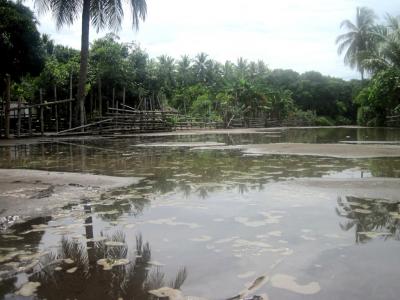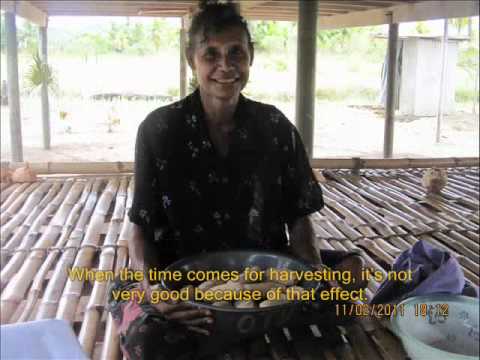
PACC PNG: Design underground irrigation systems to help PNG adapt to current and future drought
In Papua New Guinea (PNG), a small island nation located in the south-western Pacific Ocean, the PACC project focusd on enhancing food production and food security, particularly to overcome the effects of drought.
For more information on the 13 additional participating countries and the Overall PACC Programme, click here.
- Community
- Local Governments
- National Governments
- PACC
- United Nations Development Programme (UNDP)
- Global Environment Facility (GEF)
- SPREP
- Australian Government
The climate and weather pattern of PNG is heavily influenced by El Nino and La Nina. In recent times, surface temperature has increased and currentweather patterns seem to be reversed: drier regions are now wetter and wet areas drier. Warmer temperatures are ascending into the PNG highlands.As a result of these warmer temperatures, malaria has crept into the lower regions of the highland, a trend that will likely ascend into higher altitudes as temperatures continue to increase.
PNG has experienced at least 13 severe droughts over the last 120 years, and in almost all cases, the lowland areas of Central Province as well as communities in Milne Bay, Morobe, and Madang were seriously affected by drought.
In 1997-98 up to one million people across PNG were affected by the severity and extent of the drought conditions and subsequent food shortages. Increased periods of drought in the highlands of PNG have hadsignificantimpacts on the economy, environment sectors and livelihoods of the majority ofthe population in the country. People in PNG experience domestic water shortages on a regular basis resulting from limited rainfall.This has serious implications for the people of PNG and their community, as it affects the availability of water for consumption, agricultural production and industry.
The first of the PACC outcomes is devoted to mainstreaming. The PACC approach to mainstreaming has a dual purpose: 1) to strengthen the ability of institutional frameworks, policies and plans to take climate change risks into consideration and 2) to improve the capacity of key national government and community decision-makers to integrate adaptation measures in key decisions.
The second PACC outcome is to design and demonstrate innovative decision systems, approaches, technologies and practical measures to improve climate-resilience.
The third outcome, Technical Support and Communication, is to ensure that results and lessons from the PACC project are shared regionally and globally. The goal is also to bring together new knowledge generated through the project as the basis for a strategic regional approach to climate change adaptation among Pacific Island Countries and Territories.
Key Results
- National adaptive capacity developed
- Community vulnerability to climate change reduced
- Technical assistance & Regional Cooperation
Outputs
- 1.1 Technical capacity of key decision makers developed
- 1.2 Institutional coordination mechanisms established
- 1.3 Tools to assess economic costs of adaptation developed and utilized
- 1.4 Legislative and policy directives prepared and adopted
- Department of Agriculture and LivestockAndrew MikaPACC National Coordinator
- SPREPTaito NakalevuPACC Regional Project Manager
- UNDPMarta MoneoUNDP Environment Programme Officer
- UNDPGabor VerecziUNDP Regional Technical Advisor

